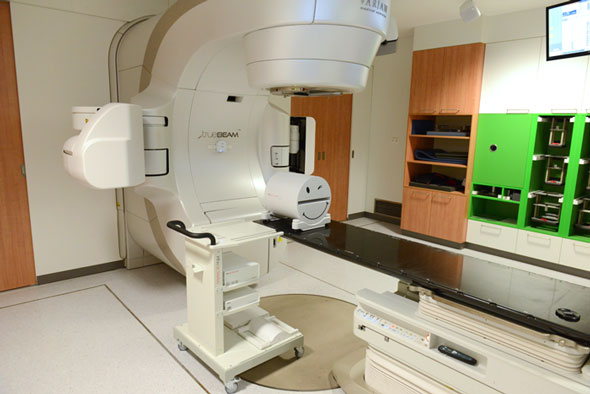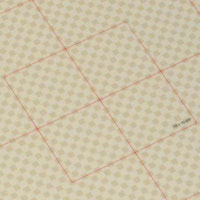Our new modular OCTAVIUS 4D 1500 system offers full 3D dose measurement capability for all our clinically used field sizes and dose rates.

(The modular OCTAVIUS Rotation Unit has just been unloaded from the Trolley.)
Major System Components
Plan Preparation
In Eclipse, we use a synthetic TPS phantom to calculate 3D dose. This 3D dose shall later be compared with measurements.
Measurement
Phantom setup on the linac takes less than five minutes. A cross calibration with a static reference field comes next.
While the TrueBeam delivers the VMAT or SRS plan in QA Mode, the OCTAVIUS Detector 1500 rotates in synchrony with the gantry, and time-dependent 2D dose data is aquired with VeriSoft, together with the angle information provided by the Inclinometer. The measurement is saved as XCC-file.
Plan Evaluation
From the XCC-file, VeriSoft reconstructs a full 3D dose "cylinder" of variable size, depending on the top in use. The reconstructed dose is immediately analyzed.
Clinical Examples
We have compared two different approaches regarding the creation of the TPS phantom. The results for some clinical plans suggest that the simpler approach is the better one.
Some More Details
For the dose reconstruction process the user has to provide percentage depth dose (PDD) data measured in the water phantom. We used the microDiamond detector for aquisition of our beamdata.
Basic validation measurements should be performed, with test fields ranging from the simplest to the most complex fluence distributions.
During VMAT and most other treatments, the couch is in the beam for a certain fraction of the treatment. Care should be taken that the clearance under the TPS phantom matches the real world situation.
Two measurements can be merged in VeriSoft to a single dataset with higher spatial resolution.
